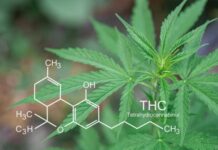
Researchers have recently discovered that therapeutic peptides can cure various illnesses. Peptides have poor stability and a short half-life in plasma; hence, they are administered intravenously and consistently.
The most common route is oral administration since it is simple, patient-friendly, and inexpensive. This makes it the most popular choice. Before the oral administration of peptides may be effective, several challenges need to be surmounted. These challenges include limited absorption, poor permeability, and rapid breakdown in the gastrointestinal tract.
Enhancers of absorption, conjugation or chemical modifications, enzyme inhibitors, and mucoadhesive polymers are some strategies that have been used to overcome these obstacles. Despite their low bioavailability, several methods have shown promising results in clinical tests, and some of them are getting closer and closer to becoming commercially available. Even though the oral administration of peptides has been made more accessible, new strategies are still required to address challenges such as the impact of food and individual variability.
Because of their selectivity, effectiveness, and low toxicity, peptides are attractive prospects for application in the pharmaceutical industry. However, while having a relatively short half-life, they are susceptible to proteolytic degradation, creating tremendous barriers to transport to the desired region. Because of their high hydrophilicity and molecular weight, epithelial membranes are less likely to let them pass through. Any method of oral distribution must pay careful attention to the pH range experienced in the gastrointestinal system to maintain the stability and solubility of the formulation being delivered (GI). In addition, since they are potential substrates for the many digestive enzymes, a significant portion of the supplied dose is likely to be digested even before it reaches the epithelial barrier. This is because of the abundance of digestive enzymes.
On the other hand, the stability of a peptide in the digestive tract and its oral absorption may be dramatically impacted by a small number of structural characteristics of the peptide. Cyclic peptide structures, for example, seem to have greater strength in the digestive system, which makes them more suited for this delivery pathway.
Because some peptides have the potential to self-assemble or aggregate, the distribution of peptides is made more difficult by using this method. Because of this tendency, it may be necessary to take steps to prevent aggregation from occurring. The delivery of peptides is made more difficult by this mechanism.
In order to combat these issues, one of the more innovative approaches to formulation has been to make use of a variety of excipients, such as absorption enhancers, enzyme inhibitors, and enteric coatings, to limit the distribution of peptides to specific areas of the gastrointestinal tract (for example, enteric coatings). These systems are often hindered by the effects of food, which prevents the delivery of the peptide, the absorption enhancer, and the enzyme inhibitor to the epithelial membrane.
Both the tolerability of the oral administration route and its effectiveness might be compromised by a disease or condition that disrupts the function of the gastrointestinal (GI) system. As a consequence, the performance of the delivery system and the appropriateness of the oral route may be impacted by various conditions. Some of these conditions include difficulties with swallowing, secretions from the gastrointestinal tract (such as enzymes and bile), the integrity of the epithelium barrier, and transit time. Peptides for sale are available for purchase by researchers interested in further examining their properties.








